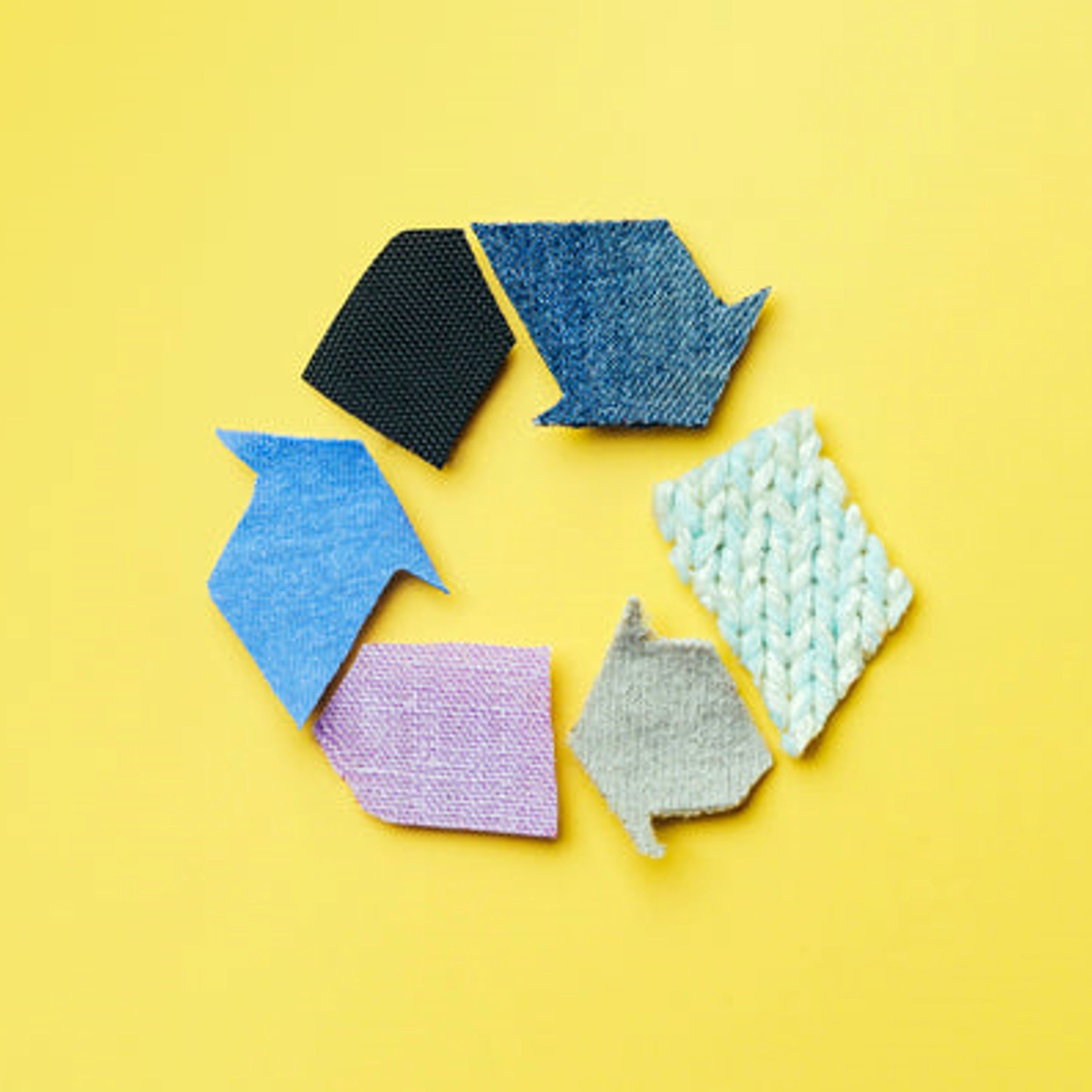
Debunking Popular Sustainable Fashion Myths
BY LAUREN WEIHERER
In more recent times, the term “sustainability” has unquestionably become a buzzword in the fashion world. With knowledge of the industry’s environmental impacts increasingly permeating the public consciousness, companies are scrambling to earn a green reputation. The abundance of conversation and information on the subject is an invaluable tool for transparency and change. But with an abundance of information, misinformation is inevitable. That’s why we scouted the internet to discover these five myths that need to be debunked immediately.
Myth #1: According to the research, fashion is the second most polluting industry
False: There isn’t enough research to create a ranked list that’s actually valid, which means #2? Well, it’s a fantasy figure, and any list that gets too specific without acknowledging these data limits might as well be imaginary. The Pulse of the Fashion Industry’s yearly reports—a collaboration between the Global Fashion Agenda and the Boston Consulting Group—is one of the few resources that compiles and analyzes data in order to provide a concrete idea of the fashion industry’s environmental progress and damage for a given year. In 2017, the Pulse of the Fashion Industry report begins their analysis by stating that there is a lack of data to substantiate the claim that the fashion industry is the second most polluting industry in the world.1 This is probably the reason why a google search for a list ranking the most polluting industries produces a lot of variable and conflicting results, most of which include a lack of credible sources. The truth is that there is not yet enough comparative data to create such a list. So why has this unsubstantiated claim become so popular and widely accepted? According to the New York Times, who cites Linda Greer, former senior scientist at the Natural Resources Defense Council, it largely comes down to relatability: the fact that fashion is a consumer-facing industry.2 One that is wildly successful at appealing to our psychology. So, while many people are interested in talking about the impacts of fashion, they’re generally not so interested in talking about the cement industry. Key point? We don’t know the order of the ranking, but we do know which industries are significant enough to be on the list. Let’s fix the fashion industry without allowing other problematic industries to slip under the radar just because they’re not as relatable to our daily lives.
Myth #2: Vegan = Sustainable
False: Although a company’s focus on not contributing to the exploitation of animals is great, these same companies all too often fail when it comes to being environmentally aware. It might be tempting to think vegan = good, period. But this is simply not the case. There are issues with many of the vegan materials commonly used in terms of biodegradability. Additionally, the processes of creation and the chemicals released from vegan products can be just as—or more—unsustainable when compared to nonvegan materials.3
Vegan leather, for example, is most often made from PVC (polyvinyl chloride) and polyurethane. Since PVC is such a rigid material, phthalates are added in production, and these phthalates can often leak out over time as the material becomes degraded, which is not only toxic for the environment but depending on the phthalates used can be directly toxic to human health as well. By comparison, while the current method to create polyurethane is less toxic, both of these materials largely contribute to the millions of tons of synthetic fibers that end up in the ocean every year, of which only a small fraction are from a recycled source. Despite all of these pollutant factors, companies advertise the term vegan as if it absolves the material and the company of any ethical issues.
The misleading marketing that many companies use when cashing in on their vegan label is very common, which makes it a great example of greenwashing. “Greenwashing” is in essence a marketing strategy that either makes sustainability claims that the company doesn’t live up to, or overemphasizes the small changes in order to distract from much bigger issues in their production methods.4 Convincing? Yes. Sneaky? Most definitely.
If you are interested in learning more about the greenwashing phenomenon or want the full low-down on vegan leather, check out our previous blog posts.
Myth #3: Since it’s a plant material, cotton is sustainable
Yes and No: As a plant material, cotton is much more biodegradable than synthetic clothing materials like polyester, nylon, acrylic, etc. It is also an extremely gentle material for skin, especially for those with allergies or sensitive skin.

On the other hand, production of cotton can create issues when it comes to its effect on the environment, namely in terms of pesticide and water usage. Cotton is a resource-demanding plant: it takes 20,000 liters to grow enough cotton to produce a shirt. Cotton is sometimes grown on arid land that does not receive enough rainfall for the plants, making water waste a major issue.5
However, implementing more sustainable agricultural practices like advanced irrigation technology that reduces water use and reducing the use of pesticides substantially mitigates these environmental impacts. For example, in 2011 WWF reported that they helped farmers growing cotton in Pakistan reduce their water usage by 39% and pesticide use by 47% through alternative irrigation practices. These changes also resulted in an 11% increase in profits.6 Cotton is predominantly grown in countries where it is the main source of income for many families. Working to reduce waste benefits both the environment and those who rely on the cotton for income.
Myth #4: More expensive means less worker exploitation
False: It’s tempting to assume that a higher price tag means that the workers who create these products must be more fairly compensated, but research on the topic shows otherwise. According to a report by the Clean Clothes Campaign, numerous eastern European countries have become a major location of the exploitative production common within the fashion industry.7 This is because in many of these countries the minimum wage is significantly below the living wage, creating the ideal conditions for companies to take advantage of the workers. Additionally, numerous companies have switched their production from Asia to countries in eastern Europe, not just for the similar cost of labor, but so they can use the “made in Europe” label, which does not yet have the connotations of exploitation that countries like China and Bangladesh already have. Many luxury companies such as Prada, Hugo Boss, and more are taking advantage of this fact. Consumers see the high price tag and the “made in Europe”-approved label and assume this means good ethics are in place. If you dig a little deeper, you find the facts: that the workers who create the products for a significant number of high-end brands are being paid much below their living wage. The only real difference is the location of where this exploitation is taking place.
Myth #5: If it’s made from recycled materials, that means it should be very inexpensive to purchase
False: The process of turning recycled materials into a product is actually much more costly than one would think. For example, if the recycled content comes from used material such as fabric, the process of making sure it is completely sanitized and consumer-ready is already an immediate cost there, and this is before labor needed for reconstruction has taken place.8
Products made from recycled materials are often made from unconventional materials. Sewing a bag out of tubing is a lot trickier and more labor intensive than using polyester or nylon. Oftentimes brands that use recycled materials take extra measures to keep their waste and pollution levels low, and unfortunately more sustainable manufacturing can also be more expensive. An example of this is companies that recycle the water they use during production. This is a very sustainable practice that takes plenty of labor and capital to do successfully, thereby increasing production cost. Finally, many companies that use recycled materials are smaller companies that don’t have the established scale of economy to survive lowering their prices while remaining profitable. The more aggressively these smaller companies try to expand, the more they are forced to choose: keep the prices that compensate for greener production costs or sacrifice ethics in order to lower prices.

We hope that debunking these myths has been informative. However, consumer awareness is just the beginning. Taking action is the best way to change the industry, whether that’s through new laws or everyday purchases, the potential to make a difference is seen most when it is demanded.
Economic incentives can make a huge impact when the system is motivated by profit. For example, when the U.K. mandated a 5-pence charge on plastic bags, there was a 90% decrease in amount of use.9 In the U.S., California was the first state to ban plastic bags in 2016, and within that same year plastic bag litter was reduced by 66%.10 A handful of states have quickly embraced the ban since then, with New York passing it into law as recently as March 2020. The major effects of these measures on plastic bag waste emphasizes how quickly meaningful change can occur when we embrace it so fully it becomes law. Faster industry change is imperative and offering direct financial punishments and incentives to companies is a tool that is currently being underutilized.
That being said, we should never underestimate our own influence. Everyday purchasing choices have the potential to be just as instrumental as direct mandates. We as consumers can and absolutely should embrace the power we have to influence when we invest in the future by purchasing from more sustainable brands.
Sources:
- Global Fashion Agenda, The Boston Consulting Group. “Pulse of the Fashion Industry 2017.” Global Fashion Agenda & The Boston Consulting Group, 2017.
- Friedman, Vanessa. “The Biggest Fake News in Fashion.” The New York Times. 2018. Web. 30 October 2020.
- Christian, Fox, Kelly. “Vegan Leather Isn’t as Ethical as You Think.” Vocativ. 2016. Web. 30 October 2020.
- Corcione, Adryan. “What Is Greenwashing?” Business News Daily. 2020. Web. 30 October 2020.
- “Cotton.” WWF. Web. 30 October 2020.
- “Better Cotton Hits the Market.” WWF. 2011. Web. 30 October 2020.
- Luginbuhl, Christa and Bettina Musiolk. “Stitched Up: Poverty Wages for Garment Workers in Eastern Europe and Turkey.” Clean Clothes Campaign, 2014.
- Mazzoni, Mary. “Why Are Recycled-Content Products So Expensive?” Earth911. 2013. Web. 30 October 2020.
- Hirsh, Sophie. “Here’s How the UK Dramatically Reduced Its Plastic Bag Consumption Levels.” World Economic Forum. 2019. Web. 30 October 2020.
- “California’s Plastic Bag Ban: A One-Year Review.” Lincoln California Recycling & Garbage. Web. 30 October 2020.
*********
About the Writer
Lauren graduated from UC Berkeley with a BA in English, after which she began working as a writer and editor. If she isn't writing, she's likely playing with other people's pets, expanding her playlists, or researching topics she'd like to learn more about.

